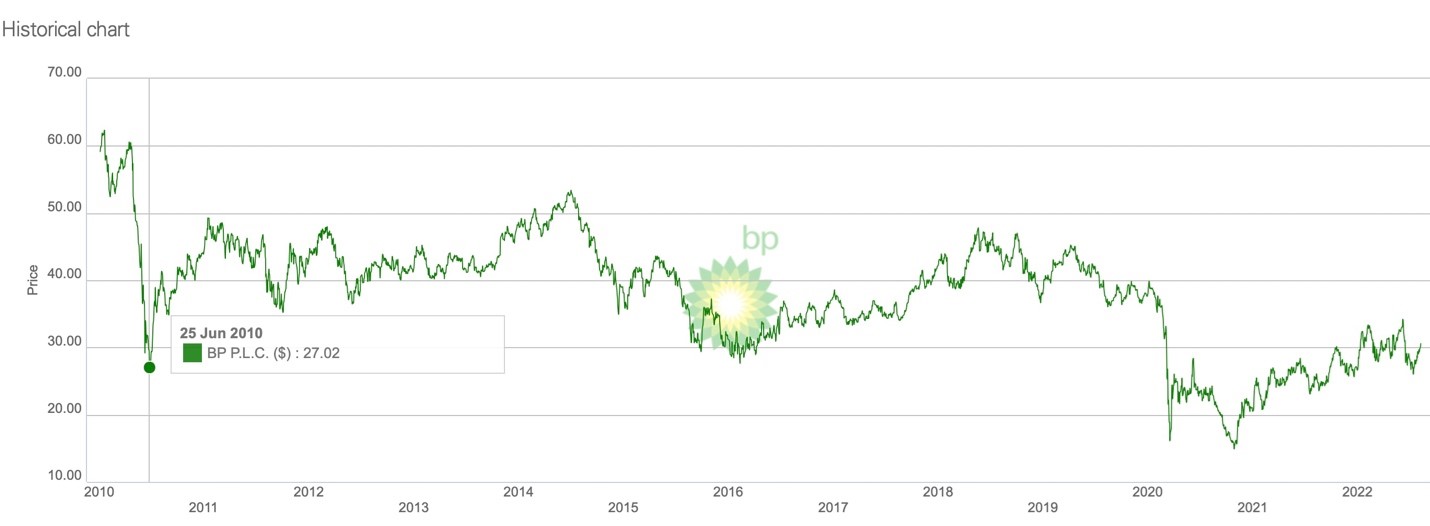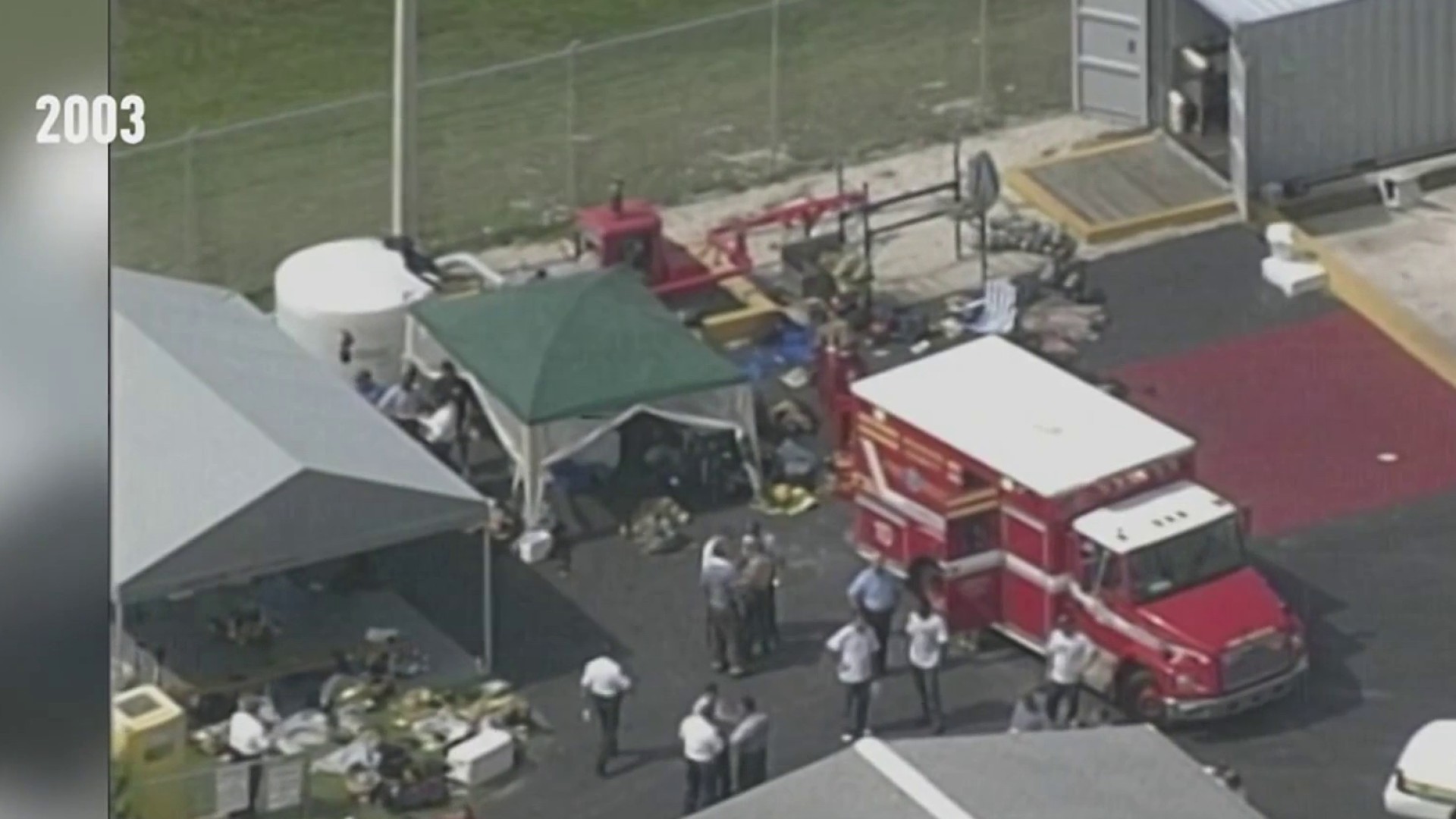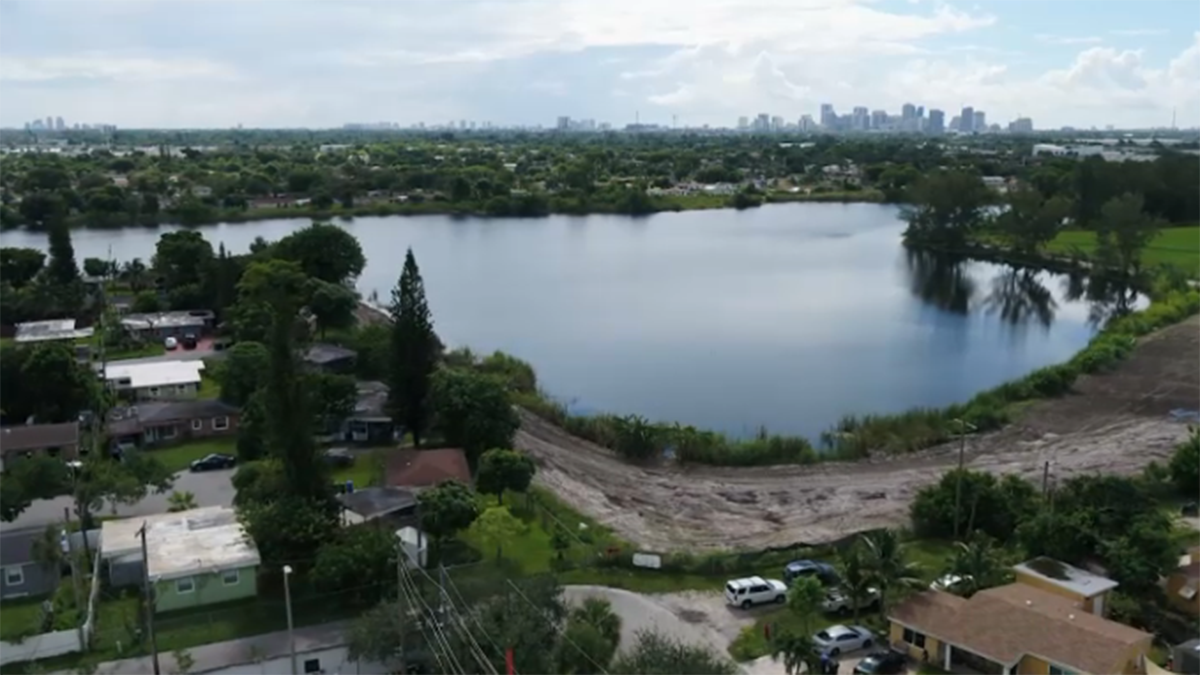- Case studies
- Premium content
- Call for contributions


A deep dive into BP’s Deepwater Horizon Spill: a case study
Under pressure – the disaster
Considered as the biggest marine disaster in history, on April 20 th , 2010, the Deepwater Horizon oil rig exploded in the Gulf of Mexico, killing 11 crew members working onsite. The rig eventually sank and damaged the pipe underneath and started to spew millions of barrels of crude oil into the gulf over the next four months. It contaminated about 400 square miles of the sea floor and 1,300 miles of shoreline of the Gulf of Mexico (DOI: 10.1002/jcaf.22306).
Search-and-rescue operations were executed on April 22 nd and within the same day, BP’s CEO Tony Hayward released a statement that they were determined to do everything to contain the oil spill and resolve the situation . When the rig capsized, BP’s initial response comprised of: 1) releasing of a small fleet of response vessels, 2) relief well planning, 3) skimming of oily surface water, 4) implementing protective boom to prevent oil from reaching the shoreline, and 5) placing chemical dispersants in the spill site to break up the oil and keep them from damaging marshes, mangroves, and beaches .
Efforts were made to seal the leaking well but were initially unsuccessful, and as a back-up, they have started drilling relief well in May. To reduce the leak, a tube tool was inserted into the ruptured riser pipe and containment cap was used to collect the oil and pump it to the gulf surface. On July 15 th , BP was able to stop the flow of oil for the first time in 87 days but was still under monitoring to ensure that the cap would stay in place. More than 2 weeks later, the US government announced that almost three-quarters of the spilled oil had been cleaned up, and on September 19 th , BP reported that the leak had been successfully and permanently plugged .
Several service providers (DOI: 10.1002/jcaf.22306) were involved in the offshore drilling operations of the Macondo well, the area of exploration where BP is operating. BP leased the rig from TransOcean, while the processes such as cementing the well and other critical functions were done by Sperry-Sun, Halliburton’s subsidiary. Other companies involved were Dril-Wuip, Oceaneering, M-I-SWACO, Cameron, and Weatherford.
Numerous investigations were held to find the root cause of the disaster, as well as the parties responsible for the damages. The BP report 2010, the Commission Report 2011 and the Joint Report 2011 concluded that the tragedy occurred due to a series of failures from the multiple parties involved in the operation. BP had been identified as the primary responsible for ensuring the safety and protection of personnel, equipment, natural resources, and the environment under the Oil Pollution Act (OPA). The other companies also shared the same accountability for violating several offshore safety regulations based on the Joint Report 2011.
It was revealed that the crisis has cost BP more than US$65 billion covering the total charges, net of reimbursements and recoveries, as well as insurance claims. However, a study (DOI: 10.1002/jcaf.22306) showed that the ultimate cost of the oil spill was twice what was reported in BP’s income statement, amounting to US$144.89 billion. The detailed computation included not just those mentioned above but also the hidden costs such as the revenue lost, unearned profit, and reputational damage. Needless to say, the spill also damaged fisheries, beaches, and coastal wetlands, including several species of birds, sea turtles, marine mammals, fishes, oysters, and other sea animals. A recent study showed that Gulf inhabitants such as brown pelican and menhaden fish have showed robust recovery while many species such as deep-sea coral, common loons, and spotted sea trout are still struggling to multiply.
The Deepwater Horizon spill also brought significant impacts to the economic activity in the surrounding communities. A research (DOI: 10.1007/978-3-030-11605-7_33) revealed that the total economic costs during the period of 2010-2020 of the foregone commercial fishing revenues and recreational fishing expenditures are loss of 25,000 jobs, US$2.3 billion worth of industry output, US$1.2 billion gross regional product, US$700 million labor income, US$160 million state and local tax revenues, and US$160 million federal tax revenues.
A deep well of learnings
Oil spills are not uncommon in the Gulf of Mexico but the magnitude of impact of BP’s Deepwater Horizon had been massive that it attracted so much attention from various stakeholders, not to mention the several missteps BP took as they navigated through the whole crisis. Here is the list of some lessons learned from the accident that, in some way or another, brought lasting impact on the safety of succeeding oil operations in the industry.
- Never learning enough from previous mistakes. In a high-risk business like oil-drilling, it is expected that large companies such as BP would have anticipated negative events in many of its operations. Even more so when there had been several accidents that happened prior the major oil spill. In 2005, BP’s refinery in Texas City exploded and their Thunder Horse rig in the same gulf got into an accident. In the following year, BP’s pipeline leaked in Prudhoe Bay. It was reported that BP was still paying for the violations in these previous disasters when the Deepwater Horizon spill happened .
- Culture of safety must be embraced by the whole industry. The disaster showed how neither the industry, nor the governments were prepared for risks involved in oil exploration. The investigations revealed how failures in following procedures to mitigate risks, and loose coordination among operators and regulatory bodies led to this disaster. It is important for organizations to understand that regulations are for their benefit, and it can provide level playing field for all stakeholders, especially during a crisis. In addition, regulations must be well-enforced, and penalties must be tantamount to the damages incurred in a disaster. Lax safety enforcement for the part of Minerals Management Service (MMS), the regulating body for offshore oil drilling, was found in the investigations. In fact, in the report released by the General Accountability Office (GAO), MMS showed a series of inconsistencies and omissions in their National Environmental Policy Act analyses and was described to lack organization, guidance, technical expertise, and qualified personnel .
- Plans must be prepared and reviewed to the highest standard possible. BP had MMS-approved Gulf Oil Spill Response Plan that detailed cleanup equipment and techniques, surface containment methods, and the use of chemical dispersants while missing out the more important parts of preventing or stopping a blowout. It was later found that BP’s response plan was written by the same contractor that prepared the plans for other oil companies such as ExxonMobil, Chevron, ConocoPhillips, and Shell Oil. Congressional inquiry described the plans as “cookie-cutter” that similar errors were found in some of the companies’ response plan . Furthermore, BP received a categorical exclusion for exploration plan for Macondo Prospect, allowing them to drill without preparing detailed site-specific environmental assessment based on the outdated assumption that “the impacts from the common operations are expected to be negligible to non-existent…”.
- Ensure that Business Continuity Plan includes third-party agreement. Several subcontractors involved in the Deepwater Horizon operations had made the already complex nature of the business even more complicated. Complex risks may arise from third party contractors and their capability to continue their operations. This is why it is important that critical suppliers must have Business Continuity Management arrangement in place. Furthermore, a robust action plans as part of collective response among suppliers in case of a disruption must be included in their contractual obligations. Had the employees well-informed of their responsibilities and safety actions, the death of 11 crew members would have been prevented. Had BP and its contractors have pre-arrangement contracts that included BCM, they would have not blamed each other and engaged in multi-billion dollar litigation after the accident.
- Communication is an integral aspect of crisis management. BP has become a textbook example of how not to handle public relations. Several studies evaluating BP’s actions in terms of crisis communication have been published following the major incident. Below is a quick rundown of both weaknesses and strengths of BP’s campaign (DOI: 10.1080/13527266.2018.1559218).
Digging deeper
Initially, BP’s several mishaps in managing the disaster making it easy for environmentalists, politicians, media, and other concerned individuals to paint the company as uncaring and greedy organization that cares for profits more than anything else . When the rig exploded and oil spill happened, BP was quick to shift the blame to TransOcean through their official statements, and the former CEO Hayward’s media interview. He said: “ This wasn’t our accident. This was a drilling rig operated by another company. It was their people, their systems, their processes. We are responsible not for the accident, but we are responsible for the oil and for dealing with it and cleaning the situation up.”
Lack of concern for the victims was also seen by many when there were reports that BP asked the cleanup workers and those who were affected by the spill to sign a waiver that would limit BP’s liability. This was during the ironic time that BP reported their 135% first quarter profit of $5.6 billion. The company also failed to be transparent, hindering people to build confidence and trust that they were on top of the situation early on. For example, the initial estimate of the leak was only 1,000 barrels per day, increased it to 5,000 barrel per day after more than a week, then later submitted a figure of 100,000 barrels per day to the Congress for investigation.
Lastly, former CEO Tony Hayward’s statements and actions attracted a lot of negative attention. In an interview with The Times of London, he mentioned that some victims would try to scam them for profit (Ibid) “I could give you lots of examples. This is America – come on. We’re going to have lots of illegitimate claims. We all know that.” Furthermore, he tried to downplay the damage caused by the accident by saying “ the Gulf of Mexico is a very big ocean. The amount of volume of oil and dispersant we are putting into it is tiny in relation to the total water volume.” He was also recorded saying in front of many reporters, “The first thing to say is I’m sorry. We’re sorry for the massive disruption it’s caused their lives. There’s no one who wants this over more than I do. I would like my life back.” He was later seen on a yacht off the Isle of Wight, 2 days after testifying before Congress.
The reputation repair
As BP struggled to find solution to stop the oil spill and its dwindling reputation, its share price and credit rating also grappled. The shareholder value of BP plummeted by 55% after the incident, from US$59.48 per share on April 19 th , 2010 to US$27 per share on June 25 th , 2010 . Furthermore, Fitch cut its credit rating from AA to BBB after US politicians demanded US$20 billion deposits in an escrow account to fund the damage claims for the oil spill as the agency was concerned about the ratio between long-term and near-term cost payments would become skewed towards the near-term cost . However, the meeting of BP’s executives with Obama in June was considered a turning point. BP’s Chairman Carl-Henric Svanberg told Obama: “ Our boat is keeling over right now. We’re not taking on water but we’re not far away. If you and the administration can be supportive going forward, that would help us do the right thing.” Obama responded that it is the country’s interest for the company to remain strong and viable to be able to fulfill its commitments . It was on this meeting that BP agreed to fund the US$20 billion escrow account, which investors received positively .
In the same month, BP hired Purple Strategies, a public affairs firm run by a Democratic and a Republican strategist, for its US campaign, alongside Anne Womack Kolton, a former US Energy Department official, to manage its US media relations. The new strategy team was able to showcase what BP had been doing for those affected by the crisis. Television, radio, and print campaign featured BP workers and Gulf Coast locals, volunteers, and BP officials. They were able to put faces on the real and human stories related to the incident. After the leak was plugged, they expanded the communication strategies to image-building by highlighting how BP was helping the Gulf Coast residents to get back to business as usual. They created two major campaigns – “Voices from the Gulf” and “My Gulf”.
Voices from the Gulf: Mississippi Fishermen
Voices from the Gulf: Louisiana’s Restaurant Owners
Voices from the Gulf: Florida Business Owners
My Gulf: Dawn Moliterno – Walton Tourism Development
My Gulf: New Orleans, Louisiana – Cooking the Perfect Gumbo
My Gulf: Josephine, Alabama: Shrimpin’ with Papa Roy
Another unprecedented albeit necessary decision happened in the following month, Tony Hayward, whose gaffes had enraged a lot of Americans, announced that he was stepping down as CEO and would be replaced in October by Bob Dudley, a Mississippi native who was in charge of BP’s clean-up response .
A year of change – the post crisis phase
Changing leadership amidst the crisis was a pivotal step for BP to redirect its direction through the crisis. Bob Dudley’s first tasks as the CEO were: 1) securing the company’s finances, 2) ensuring the safety of BP’s operations worldwide, and 3) restoring the environment of the Gulf Coast . He needed to sell BP’s oil and gas assets quickly, including their prized assets such as the Texas City refinery, Gulf of Mexico oilfields and Russian joint venture , and also do forward sale oil to safeguard BP’s future while meeting its commitment to the Gulf.
Guided by his principle of “value over volume”, Dudley cut the number of BP-operated upstream installation by 50%, the number of wells by more than 30%, and oil and gas reserves by 10%. In addition, he formed a new global Safety and Operational Risk team to instill the culture of safety in the company . Apart from the operation and culture, he mentioned in an interview that capital allocation and decision-making were also reformed . BP became “ inclusive, and modern place to work where leaders were encouraged to listen to the quietest voices in the room ”.
BP’s support to its business partners and people during the crisis did not wane but even strengthened. Dudley found that while several of BP’s partners such as banks were pulling away, there were some partners that were supportive and willing to help. Moreover, he also felt the need to rebuild the confidence of their employees in their company as he was worried that competitors might try to hire their talent away .
The oil company remained committed to environmental restoration. They provided up to US$1 billion for restoring natural resources that were impacted by the accident. In addition, BP has allocated US$500 million for a decade of support to independent research designed to provide better understanding of the Gulf ecosystem and industry. With the help of experts in high-hazard sectors such as nuclear energy, chemicals and the military, BP strengthened their operational risk function. Furthermore, they were able to design and prepare a capping stack that can be used in case another leak in deep water happens .
BP: A year of change
Rising above pressure
The post-crisis organizational reform was able to regain the investors’ trust as shown by the share price increase from June 29 th , 2010. Although the share has not gone back to its pre-oil spill crisis price at around US$60, it did not go below US$27 until the COVID-19 pandemic hit.

BP strengthened its finances after the crisis by cutting costs to reduce breakeven point while improving oil production . In 2017, Moody’s increased BP’s credit rating for the first time in 19 years citing the company’s resilience to oil price volatility and increased clarity in terms of the remaining cash payments related to the US$20 billion Deepwater Horizon settlement .
BP continued to acquire various projects including those that focus on natural gas such as shale gas production from about 200 wells in Oman , the natural gas production at Atoll gas field in Egypt , and several American oil and shale projects bought from mining firm BHP, its first major US investment since the oil spill , among others. Although only a small fraction of their total spending, BP started investing in renewable energy at around US$400 million a year. They invested in startup firms like Freewire, which possesses a technology that allow charging electric vehicles faster. It also acquired Chargemaster, UK’s biggest network of EV charging stations, as well as 43% share of Lightsource, Europe’s largest solar development firm . Like other oil companies, BP received several criticisms for doing inadequate efforts to reduce carbon emissions and increase renewable energy, especially that between 2016 and 2019, BP expanded its oil and gas production by 20% .
In 2020, BP announced that it aims to become a net-zero emissions company by 2050 or sooner. It revealed their commitment to a 10-fold increase in low-carbon investment or an estimate of US$5 billion per year, and a 20-fold increase in renewable generating capacity to 50 gigawatts . Headed by the current CEO Bernard Looney, who succeeded Dudley in February 2020, the oil giant plans US$25 billion in fossil-fuel asset sales by 2025, with US$15 billions of which has already been liquidated by unloading the Oman deal, oil and gas field in Alaska and the North Sea, and BP’s entire petrochemical operation . Although the company does not expect profits from its clean-energy business such as solar, EV-charging, and wind ventures until 2025, Looney continues to spend on renewable energy.
The Final Cap
To keep its commitment to meet its obligations in the Gulf of Mexico in spite of almost losing its whole business to the accident is praiseworthy; to move forward, learn its lessons, and transform into a better organization is even more admirable; but nothing can beat a well-prepared company that can prevent a crisis to happen, or at least mitigate the risks. The BP’s Deepwater Horizon Oil Spill is a great example of how return on investment of robust emergency response and business continuity programs can worth priceless.
In addition, the accident showed us that the most critical aspect of crisis leadership is clear and trustworthy communication. The goal of communicating during a crisis is not to lessen the uncertainty but to acknowledge it and the fear that comes with it. Transparency, honesty, and empathy are always the best policy.
If you liked this case study, you might also want to read this one .
Author: Lucil Aguada
RELATED ARTICLES MORE FROM AUTHOR

What I honestly think about ‘you’

Can we boycott Chiara Ferragni? The commentary on the crisis case

High cost of racism in high fashion: a case study on Dolce and Gabbana’s cultural appropriation

Humor and humility saved the chicken: the KFC logistics blunder

Volkswagen USA – Libertyville Case
Leave a reply cancel reply.
Log in to leave a comment
High cost of racism in high fashion: a case study on Dolce and Gabbana’s...
Domino’s pizza, the toss and turn, netflix’s way: innovating resilience, business continuity and sustainability: why top management is key.

When you visit a website, it may store or retrieve information on your browser, mainly in the form of cookies. Check your personal cookie services here.
- wordpress_test_cookie
- wordpress_logged_in_
- wordpress_sec
- wordpress_gdpr_cookies_allowed
- wordpress_gdpr_cookies_declined
- wordpress_gdpr_allowed_services
- __wpdm_client
Welcome to About Resilience.
Click here to sign up for our premium content, which will grant you free access to our exclusive body of knowledge on organizational resilience, including proprietary research and industry resources.
Exclusive: Thousands of BP Oil Spill Samples Sit Inside South Florida Warehouse
The samples were obtained by lawyers representing people in lawsuits against the company. , by willard shepard • published february 9, 2023 • updated on february 13, 2023 at 7:55 pm.
It’s been nearly 13 years since one of the worst environmental disasters in U.S. history: the BP oil spill.
The Deepwater Horizon explosion killed 11 workers, devastated wildlife and Florida’s economy .
📺 24/7 South Florida news stream: Watch NBC6 free wherever you are
Many who worked on the cleanup efforts have since taken legal action alleging they were exposed to harmful chemicals that made them sick.
NBC 6 Investigators were granted exclusive access to a secret location attorneys said could lead to some answers.
The Hurricane season is on. Our meteorologists are ready. Sign up for the NBC 6 Weather newsletter to get the latest forecast in your inbox.
It’s a subzero room inside a South Florida warehouse filled with about 120,000 samples taken following the disaster.
“You are going to see a combination of water samples, sand, beach samples,” said attorney Dylan Boigris. “Even samples from the PPE workers were wearing.”
His law firm is representing at least 150 people who have filed lawsuits against BP, including Florida resident Vincent Culliver.
Investigations
NBC 6 Investigates gets results

Questions remain over fatal fire training in Miami-Dade, 21 years after similar tragedy

County asks landowner to make changes, pay fee after NBC6 investigation into Rock Pit Lake project
“I was in Grand Isle, Louisiana, during the oil spill, cleaning up vessels and booms,” he said during an exclusive interview with NBC 6.
The Deepwater Horizon oil spill sent over $3 million gallons of oil into the Gulf of Mexico, according to the EPA.
Culliver said his job was to clean boating equipment used to soak up the oil.
“We had to decontaminate the boom from the oil into a swimming pool of contaminated water,” he said.
But one day, Culliver said he fell into that pool.
“One of the pallets broke. When it broke, I fell back and my back hit the back of the pallet. I'm lying in this stuff. I won't move because of my back. I'm screaming my back,” he said.
Culliver said his back got better but a few years ago, he was diagnosed with prostate cancer.
“Discussing prostate cancer for the first time with my doctor was devastating. I just got married. I just got married,” he said.
In a federal lawsuit, Culliver alleged “the exposure during the time he worked as a Clean-Up Worker for the Oil Spill was a substantial contributing cause (of Culliver’s cancer).”
“Our lives changed that day. Our lives changed that day,” Culliver said while fighting back tears.
“This fight is still ongoing, and the fight is particularly for the people who were cleaning up BP's mess and for the people who were in the communities BP contaminated their water,” Boigris said. “They need to check with their physicians to understand if they have been impacted by the oil spill in any way.”
Boigris said the subzero room is holding evidence that could be presented in court. His law firm took control of the samples and moved them from Colorado to Florida after the initial BP litigation.
Boigris said they have experts running their own tests.
“What we can now do is take these samples and run our own independent analytical methods with our own independent laboratories and make sure that BP did exactly what they needed to detect the full extent of contamination and toxicity that the communities were exposed to,” he said.
BP’s attorney told NBC 6 the company doesn’t comment on pending litigation. But in court filings, BP denied the allegation concerning Culliver's prostate cancer, just acknowledging he performed cleanup work as an employee for one or more third parties. The company also denied any responsibility.
BP presented 22 defenses claiming in part, “one or more superseding and/or intervening causes - such as a preexisting medical condition or conditions preclude any finding of liability for damages on the part of the BP parties,” and that Culliver’s alleged injuries were caused by his “own negligence and recovery is thus barred.”
Culliver told NBC 6 that’s not the case and he was a healthy man before. After his first diagnosis, Culliver says the cancer came back and he’s currently undergoing treatment.
“I have these choices no man wants to live with, so I had to really get with God and my wife,” he said.
There have been several studies looking into the potential health impact on cleanup workers but NBC 6 couldn’t find any study looking specifically into the link to prostate cancer, which it’s the second most common form of cancer among men in the United States, according to the CDC.
BP entered a major settlement over medical claims years ago. But since, other cleanup workers have filed lawsuits claiming they developed health conditions afterward. Some cases have been dismissed for insufficient evidence.
Culliver’s case is moving through the court system.
This article tagged under:
- SUGGESTED TOPICS
- The Magazine
- Newsletters
- Managing Yourself
- Managing Teams
- Work-life Balance
- The Big Idea
- Data & Visuals
- Reading Lists
- Case Selections
- HBR Learning
- Topic Feeds
- Account Settings
- Email Preferences
Five Lessons From the BP Oil Spill
- Andrew Winston
It’s very easy to pile onto BP right now. The “accident,” which may be due more to negligence, is bad enough. The company lost 11 employees — after losing 15 in a high-profile explosion at a refinery 5 years ago. The damage to the Gulf, its species, and the people who depend on it is […]
It’s very easy to pile onto BP right now. The “accident,” which may be due more to negligence, is bad enough. The company lost 11 employees — after losing 15 in a high-profile explosion at a refinery 5 years ago. The damage to the Gulf, its species, and the people who depend on it is almost incalculable. But surprisingly, it’s even easier to criticize BP’s behavior since the explosion — the company has tried hard to downplay the scale of the tragedy and it has moved slowly to stop the torrent of oil pouring into the Gulf.
- Andrew Winston is one of the world’s leading thinkers on sustainable business strategy. His books include Green to Gold , The Big Pivot , and Net Positive . AndrewWinston
Partner Center
Sustainability: Ethics, Culture, and History
Case study: energy and the bp oil disaster, learning objectives.
The BP Oil Disaster of 2010 is presented as an example of complex human systems failure.
On the night of April 20, 2010, the Deepwater Horizon oil rig, one of hundreds operating in the Gulf of Mexico, exploded, killing eleven men, and placing one of the most rich and diverse coastal regions on earth in imminent danger of petroleum poisoning. BP had been drilling in waters a mile deep, and in the next two days, as the rig slowly sank, it tore a gash in the pipe leading to the oil well on the ocean floor. Over the next three months, two hundred million gallons of crude oil poured into the Gulf, before the technological means could be found to seal the undersea well. It was the worst environmental disaster in American history, and the largest peacetime oil spill ever.

The Deepwater Horizon Oil Rig on Fire The Deepwater Horizon oil rig on fire, April, 2010. It would later sink, precipitating the worst environmental disaster in United States history. Source: Public Domain U.S. Coast Guard
The BP oil disaster caused untold short- and long-term damage to the region. The initial impact on the Gulf—the oil washing up on beaches from Texas to Florida, and economic hardship caused by the closing down of Gulf fishing—was covered closely by the news media. The longer term impacts of the oil spill on wetlands erosion, and fish and wildlife populations, however, will not likely receive as much attention.
Much public debate over the spill has focused on the specific causes of the spill itself, and in apportioning responsibility. As with the example of bee colony collapse, however, the search for simple, definitive causes can be frustrating, because the breakdown is essentially systemic. Advanced industries such as crop pollination and oil extraction involve highly complex interactions among technological, governmental, economic, and natural resource systems. With that complexity comes vulnerability. The more complex a system, the more points at which its resiliency may be suddenly exposed. In the case of the Deepwater Horizon rig, multiple technological “safeguards” simply did not work, while poor and sometimes corrupt government oversight of the rig’s operation also amplified the vulnerability of the overall system—a case of governmental system failure making technological failure in industry more likely, with an environmental disaster as the result.
In hindsight, looking at all the weaknesses in the Gulf oil drilling system, the BP spill appears inevitable. But predicting the specific vulnerabilities within large, complex systems ahead of time can be next to impossible because of the quantity of variables at work. Oil extraction takes place within a culture of profit maximization and the normalization of risk, but in the end, the lesson of BP oil disaster is more than a cautionary tale of corporate recklessness and lax government oversight. The very fact that BP was drilling under such risky conditions—a mile underwater, in quest of oil another three miles under the ocean floor—is an expression of the global demand for oil, the world’s most valuable energy resource. To understand that demand, and the lengths to which the global energy industry will go to meet it, regardless of environmental risk, requires the longer view of our modern history as a fossil-fueled species.

Review Questions
In what ways is the BP Oil Disaster of 2010 an example of complex human systems failure, and what are its longer chains of causation in the history of human industrialization?
- Sustainability: A Comprehensive Foundation. Authored by : Tom Theis and Jonathan Tomkin, Editors.. Provided by : OpenStax CNX. Located at : http://cnx.org/contents/[email protected] . License : CC BY: Attribution . License Terms : Download for free at http://cnx.org/contents/[email protected]

Privacy Policy
BP Gets Win in Oil Spill Florida Injury Cases
Kirkland is mentioned in Law360 regarding the Firm's role in litigation over the 2010 BP Deepwater Horizon oil spill.
A Florida federal judge on Wednesday dismissed a group of bellwether cases in litigation over the 2010 BP Deepwater Horizon oil spill brought by state clean up workers and coastal residents who claimed they had health problems from the disaster, finding their expert testimony was flawed.
The ruling by U.S. District Judge M. Casey Rodgers involves about 500 cases filed by plaintiffs who were diagnosed with medical problems after a cut-off date in a settlement agreement in the main multidistrict litigation over the spill in Louisiana federal court. The judge sided with BP's argument regarding toxicologist Dr. Patricia Williams' testimony that particulate matter from oil and arsenic caused the plaintiffs' chronic medical problems, which include headaches and nausea. The judge said that her opinion fell "woefully" short of the federal Daubert standard for expert witness testimony. Judge Rodgers said that Williams failed to provide any analysis of the studies she relied on and therefore her opinions are "classic ipse dixit." She also refused to consider data for exposure to chemicals from the Gulf Coast of Florida, instead relying on data from locations far from the area, the judge said. The 2010 disaster killed 11 people and caused 4 million barrels of oil to spill into the Gulf of Mexico, ushering in a wave of litigation. The cleanup response involved skimming oil from the water and dispersing chemicals to break up the oil, according to the opinion. Additionally, Williams didn't explain her method for identifying the scientific literature she relied on, other than saying she made computer searches and "looking for everything that is in crude oil," the judge said. "Aside from broadly observing that all epidemiological studies are flawed, Dr. Williams clearly did not feel it was her job to critique the studies she relied on or identify what distinctions, similarities, limitations, or biases in the studies she found important," the judge said. "In fact, when given the opportunity during her deposition to provide a critical analysis of the studies she relied on, Dr. Williams flatly refused[.]" BP's experts said that there was insufficient evidence from the data collected during the spill and cleanup to conclude that oil or other chemicals on the Florida coast could cause any of the chronic health problems that the plaintiffs claimed, according to the opinion. "In addition, [one expert] evaluated the actual exposure data to determine whether the bellwether Plaintiffs could have been exposed to sufficient levels of potentially harmful chemicals associated with the Deepwater Horizon spill to increase their risk of developing the chronic medical conditions at issue," the judge said. "He expressed the opinion that the levels of chemicals present in the general areas where the plaintiffs worked or resided (northern Florida beaches) were negligible and harmless to human health." The judge said that a new round of bellwether plaintiffs would be selected in a separate order. Representatives for the parties didn't immediately respond to requests for comment on Wednesday. The plaintiffs are represented by The Downs Law Group PA, Falcon Law Firm and The Nations Law Firm. BP is represented by Kirkland & Ellis LLP. The case is In Re: Deepwater Horizon BELO Cases, case number 3:19-cv-00963, in the U.S. District Court for the Northern District of Florida.
Related Professionals

A. Katrine Jakola, P.C.
Related services related services.
- Product Liability
- Class Action Litigation
Suggested Reading Suggested Reading
- 10 July 2024 Kirkland Seminar Harnessing the Power of Copilot
- 28 June 2024 Award Eight Kirkland Partners Named Among Lawdragon's 500 X – The Next Generation 2024
- 27 June 2024 Press Release Kirkland Advises WEBTOON Entertainment on its IPO
Read the e-Newspaper
Read the e-newspaper subscribers only.
- Subscribe to the Tampa Bay Times
- Sign up for the DayStarter morning newsletter
- Donate to the Tampa Bay Times
Keep up with Tampa Bay’s top headlines
Subscribe to our free DayStarter newsletter
You’re all signed up!
Want more of our free, weekly newsletters in your inbox? Let’s get started.
ONLY AVAILABLE FOR SUBSCRIBERS
The Tampa Bay Times e-Newspaper is a digital replica of the printed paper seven days a week that is available to read on desktop, mobile, and our app for subscribers only. To enjoy the e-Newspaper every day, please subscribe.
The Daily Show Fan Page

Explore the latest interviews, correspondent coverage, best-of moments and more from The Daily Show.
Extended Interviews

The Daily Show Tickets
Attend a Live Taping
Find out how you can see The Daily Show live and in-person as a member of the studio audience.
Best of Jon Stewart

The Weekly Show with Jon Stewart
New Episodes Thursdays
Jon Stewart and special guests tackle complex issues.
Powerful Politicos

The Daily Show Shop
Great Things Are in Store
Become the proud owner of exclusive gear, including clothing, drinkware and must-have accessories.
About The Daily Show

IMAGES
VIDEO
COMMENTS
3. 4. Direct Contact: The debt remains unsettled even after several notices and emails. The. exporter should directly contact the importer's company via phone and ask them to fulfill thei r. debt repayment obligation. In this method, sometimes the buy and the seller create a good. understanding and benefit the company. 5.
Case+Study+5+-+Florida+B.P.+Reducing+Global+Greenhouse+Gas+Emissions. Course. Global Business Environment (BUSN 3100) 16 Documents. ... Although based on research of actual events, organizations and/or individuals, this case study is fictional and is intended to support learning. Cases are not intended to serve as endorsements, sources of ...
BP has become a textbook example of how not to handle public relations. Several studies evaluating BP's actions in terms of crisis communication have been published following the major incident. Below is a quick rundown of both weaknesses and strengths of BP's campaign (DOI: 10.1080/13527266.2018.1559218).
Thousands of samples from the 2010 BP oil spill are inside a South Florida warehouse. NBC 6 Investigators were granted exclusive access and explain why some say they could lead to answers.
Figure 10.7.1 10.7. 1 The Deepwater Horizon Oil Rig on Fire The Deepwater Horizon oil rig on fire, April, 2010. It would later sink, precipitating the worst environmental disaster in United States history. Source: Public Domain U.S. Coast Guard. The BP oil disaster caused untold short- and long-term damage to the region.
It's very easy to pile onto BP right now. The "accident," which may be due more to negligence, is bad enough. The company lost 11 employees — after losing 15 in a high-profile explosion at ...
The BP Oil Disaster of 2010 is presented as an example of complex human systems failure. On the night of April 20, 2010, the Deepwater Horizon oil rig, one of hundreds operating in the Gulf of Mexico, exploded, killing eleven men, and placing one of the most rich and diverse coastal regions on earth in imminent danger of petroleum poisoning.
Case Study - Free download as Word Doc (.doc / .docx), PDF File (.pdf), Text File (.txt) or read online for free. Florida B.P. was facing challenges managing export costs. It implemented a 10% advance payment strategy but could take other steps. It should research banks providing export financing services, considering payment terms, interest rates, and post-shipment support.
2. Mixing the ratio of 70:30 strategy The above statement meaning: Allowing the buyer to pay 30% of its country currency and 70% in dollars which reduces the foreign exchange risk for the Florida B.P. Example: Suppose Florida B.P. exports 300 gallons of biodiesel to Fraser transport. 300-gallon rate = $100 Then, Fraser transport will pay to Florida B.P. of $70 and Foreign exchange will be done ...
Florida State University College of Law Scholarship Repository Scholarly Publications 11-2011 Organizational Apologies: BP as a Case Study Erin O'Hara O'Connor Florida State University College of Law Follow this and additional works at: https://ir.law.fsu.edu/articles Part of the Organizations Law Commons Recommended Citation
Kirkland is mentioned in Law360 regarding the Firm's role in litigation over the 2010 BP Deepwater Horizon oil spill.. A Florida federal judge on Wednesday dismissed a group of bellwether cases in litigation over the 2010 BP Deepwater Horizon oil spill brought by state clean up workers and coastal residents who claimed they had health problems from the disaster, finding their expert testimony ...
See Answer. Question: Case Study Questions 1. Florida B.P. found it challenging to manage the production and shipping expenses related to exporting overseas. After meeting with its chosen bank, it decided to include a 10 percent advance payment in its export contracts to assist with this challenge. What other strategies could the company ...
11 people died while 3 million barrels of oil spewed into the ocean for 87 days and washed ashore in 5 states. Florida, Mississippi, Alabama, Texas and Lousiana.
View CASE STUDY Florida B.P Group 9.docx from IBM 230 at St. Clair College. IBM 230-INTERNATIONAL TRADE FINANCE SECTION-02 Case Study - Florida B.P Group No-9 1. Florida B.P found it challenging to
Case Study Questions. 1. Florida B. P. found it challenging to manage the production and shipping expenses related to. exporting overseas. After meeting with its chosen bank, it decided to include a 1 0 percent. advance payment in its export contracts to assist with this challenge.
Example Suppose Florida BP exports 300 gallons of biodiesel to Fraser transport from CO... homework. Assignment 6-ift.docx. Herzing University. BU 630. United States dollar. ... View Case study Florida B.P_2021_02_04.docx from GBM 202 at Sault College. Case study-F... Ruchi-Kumari-0785195-IBM-230-Case. St. Clair College. IBM 230. Exchange Rate.
BP Case Study - Download as a PDF or view online for free. BP Case Study - Download as a PDF or view online for free ... When tornados struck central Florida what parts are stored in the company's in February 2007, the BP Hurricane various warehouses, which will expedite the Management team used the solution to retrieval of parts needed to ...
Florida BP case study international business management year 2022..st claire college. International Business Management 100% (1) 8. Vodafone-in-egypt assignment. International Business Management 100% (1) Discover more from: International Business Management IBM100. St. Clair College of Applied Arts and Technology.
View Case study Florida B.P_2021_02_03.docx from MANAGERIAL ACC209 at Sault College. Case study-Florida B.P reducing Global Greenhouse Gas Emissions 1. Florida B.P. found it challenging to manage the
Powered by the Tampa Bay Times, tampabay.com is your home for breaking news you can trust. Set us as your home page and never miss the news that matters to you.
View Homework Help - CaSE STudy 1- florida B.P..docx from COMPUTERS 14257 at SVP College. Florida B.P.: Reducing Global Greenhouse Gas Emissions CASE STUDY 1 (Questions and Answers) 1. Florida B.P.
BP - Putting Profits before Safety Overview. Case Study - How do you think about case studies? BP has a history of safety issues; Overriding Themes of Case; Corporate Strategy; Workplace Safety; Process Management; Regulation; Two (+) Specific Incidents. March 23, 2005; Explosion at Texas City refinery; 15 dead; 170 injured; March 2006 (Not ...
The source for The Daily Show fans, with episodes hosted by Jon Stewart, Ronny Chieng, Jordan Klepper, Dulcé Sloan and more, plus interviews, highlights and The Weekly Show podcast.
Group members Student id 1.Hiral Rao 100902849 2.Anjali Rana 100904854 3.Pallavi handa 100908475 4.Samar singh 100882754 5.Deepanshu 100879790 FLORIDA BP CASE STUDY Summary: Biodiesel is a renewable energy source known as an effective alternative to reducing greenhouse gas emissions. It is being produced by Florida B.P. located in the US. Founded by Manuel Correo in 2007, this medium-sized ...